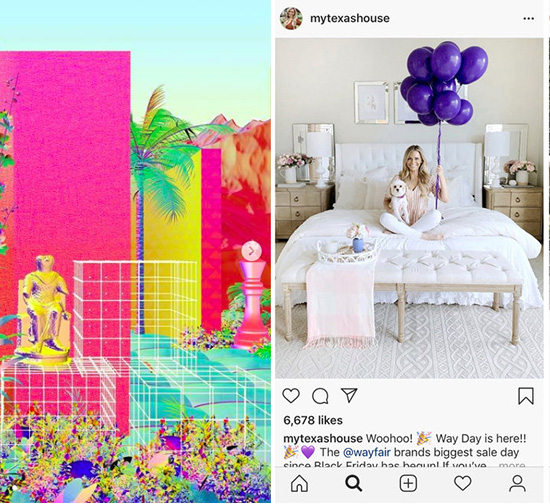- Bernadette Krejs
- completed: 2022
Architecture as Image – The Image of the Home
ON THE (RE)PRODUCTION OF DIGITAL IMAGERIES OF HOUSING ON PLATFORMS LIKE INSTAGRAM AND THE SEARCH FOR COUNTER-HEGEMONIC IMAGES
ARCHITECTURE AS IMAGE is a research endeavour exploring the aestheticized imageries of the home on platforms like Instagram. The project considers the impact of these media representation on a wider understanding of architecture and space, in particular, on living-spaces. In addition, it looks into the ability what counter-hegemonic imageries of housing can do as politically activist images to influence living spaces. In a system of accelerated globalized image production, images themselves turn into forms of representation that produce different cultures of evidence and forms of historiography, shaping social norms. Images therefore not only represent reality; they also co-produce it.
Image and architecture exist in a complex, and intricate entanglement. In our contemporary moment, reality is produced through, and consists of image. Therefore, the built environment becomes encased in, produced through, and entangled with imageries – which in turn shapes our lives in processes of mutual construction. This means that in popular everyday media like the photo-sharing platform Instagram, architecture and living spaces are medially exhibited and represented. Platform technologies pervade our everyday lives and thus radically transform different fields of life in socio-cultural as well as political and economic terms. But platforms are not neutral sites, on the contrary, they are privatized spaces owned by monopolized corporations which follow the logics of platform economy.
The aestheticized imageries of the home on Instagram that present living as consumable lifestyle, erase forms of the political, of community and diversity, and reveal consumable ideals and desires. These images fail to do justice to the complexity of housing; negotiations of boundaries, values and power structures are rendered unseen. Visible and idealized forms of the home are thus clearly delineated from invisible, undesirable housing practices. The visual ideals of living on platforms also connect and translate into physical and built structures, as shown in the globally uniform Airspaces or in Instagramable façade architectures. In opposition counter- hegemonic imageries of housing arising from the practice of drawing otherwise attempt to counter these dominant visual narratives by (re)negotiating hegemonies and producing alternative (images of ) of diversity, resistance, and community.
